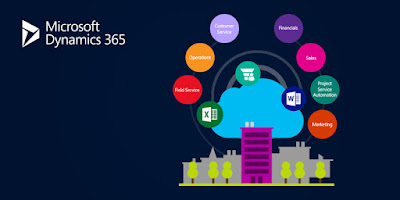Migrate MS Dynamics CRM 2016 to MS Dynamics 365 withease
Microsoft Dynamics
announced the launch of Dynamics 365 and bring all products under same umbrella
somewhere towards the end of 2016. There seems to be a lot of curiosity and
apprehensions amongst the users regarding working of the platform and
transition from old system to new one. Being Microsoft Partners, we have
upgraded systems for few of our clients and here are some of the learnings. The
best part is that most of the update process is to be handled by Microsoft and
was mostly uneventful for us.
The major concerns being,
how it will impact existing customizations, do we need to recode or customize.
The existing workflows, plugins and javascripts will work or break. How much
will the new platform support it. So here is a brief summary

The crux of smooth
transitioning lies in these words. Several Microsoft Dynamics CRM 2016 clients might
have just finished their transition from Dynamics CRM 2015 to Dynamics 2016,
and a further upgrade immediately is bound to create concerns. Essentially, the
preparation has to happen at 3 levels – The End User, System Administrators, and
the Microsoft Partner.
Proactively, Microsoft
partner should be engaged to ensure smooth transition. They are responsible to
perform some predefined sets of activities. They work with the internal teams
to ensure flawless transition. Engaging a partner is highly recommended by
Microsoft and is of definite benefit, as Dynamics 365 is a major opportunity as
well.
To apprise the users in
advance is essential,
it must be notified well in advance to users that
the system will be unavailable during the scheduled update. Help & Training
videos, and walkthroughs can be distributed and used to familiarize users with
the new experience. It is recommended to train users as a part of the upgrade
process especially in the areas of the User interface that may have changed.
This is also a good opportunity to provide general refresher training and
update training on best practices for using Microsoft Dynamics 365.
First step is to track
the upgrade events and schedule migration time line. An organized tracking of all communication
from Microsoft and acting upon them is critical. The Microsoft partner can help
in planning and rolling out the plan. Tracking success and failure
notifications as Microsoft tests out the CRM account and applications will
ensure that one stays on course. At some point of time, clients who are on
Office 365 with the old Dynamics CRM licenses would be required to re-allocate
Dynamics 365 licenses for specific users.
Manually removing and
assigning the new Dynamics 365 licenses for a limited group of users can be
done fairly
easily. A Microsoft
Dynamics partner can help develop and deploy scripts that can be run for each
user to remove and reallocate the Dynamics 365 licenses in case the number of
users is large.
Also the December 2016
Update for Dynamics 365 (online and on premises) contains updates that must be configured
manually. These include the Portal, Field Services, and Project Service products. These require the customer to
install the solution from the Office 365 portal. to receive the product
updates, one must opt in.
A Microsoft dynamics CRM partner can identify any potential issues that
may need to be addressed, else which may lead upgrade to fail, such as the
presence of unsupported customizations or incompatible third-party solutions?
Have them confirm that Microsoft Dynamics CRM 365 is compatible with the
current software. The best way is to use sandbox instance to identify issues
beforehand.
Soluzione is offering free consultations to discuss ways to style Dynamics CRM to empower your employees to be productive, empowered and to capture valuable business data to grow your business. Just drop us a line at info@solzit.com
Awesome info! Thanks for sharing. I’m excited to get started with 365.
ReplyDeleteDynamics GP Ecommerce